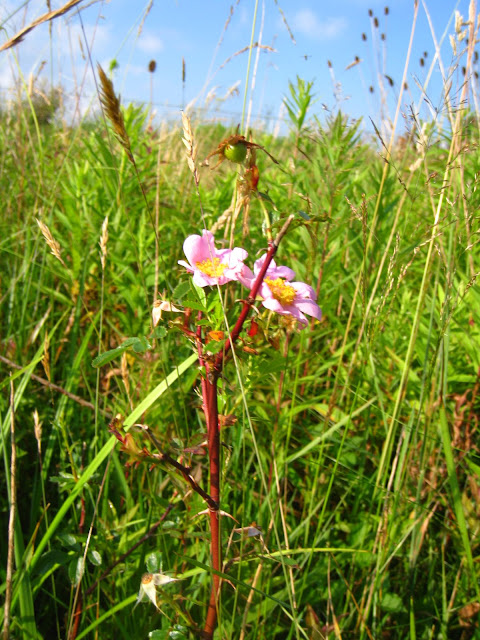September 24th.
Last year, school didn't start until midway through October, leaving us little time to spend outside before weather stopped us.
This year, we started in early September. The theme for each group is Citizen Science. Students are learning how they can help scientists gather data that will be used to study the impacts of climate change. Here's a brief overview of activities planned for the year.
Second Grade
Second grade is focusing on the fauna found in the WILD Lab. They are studying ways to identify the many critters making use of the space and currently learning about Monarch fall migration patterns. They are counting...and hoping to tag...migrating monarchs for Journey North and Monarch Watch. They will also do a monthly litter pick up, weighing and collecting data about the trash that makes its way into the Lab habitat. In the spring, they will participate in the Citizen Science project iGlobe, documenting habitat types in the WILD Lab for scientists who are studying land cover.
Here second graders are searching for and photographing signs of wildlife in and around the Lab.
Third Grade
Third grade is focusing on flora. They have learned to use an app called iSeek to identify what plants they are seeing . They will be documenting the phenology of the Lab in the spring and submitting the data to Project Budburst. They are also going to be doing a monthly collection and documentation of food wasted in the school cafeteria. The goal is to reduce the waste and educate their friends about the importance of being good stewards of our food supply.
Fourth Grade
Fourth grade is responsible for submitting rainfall data to the National CoCoRaHS network (Community Collaborative Rain Hail and Snow). They installed the rain gauge at the school this past week. In addition they will be submitting data to iGlobe about cloud coverage to help with correlating satellite photos with actual cloud conditions.
They are studying the properties of water, the water cycle, and how to keep water clean. In the spring they will collect macro-invertebrates from a local river to asses the health of the water.
Fifth Grade
Fifth graders have started their study of the critters that use the air space in the WILD Lab. They are continuing the Bluebird Box project that they started as fourth graders and also helping second grade with collection and tagging of Monarch butterflies as they pass through on their way to Mexico.
This winter they will set up bird feeding stations and participate in the Great Backyard Bird Count.
How Can You Help?
In late spring we will be organizing a clean up of the WILD Lab. It is quickly being overgrown with Autumn Olives and we need some community help to remove them. We will also be improving trails and perhaps building some structures that will allow teachers to have spaces to bring their classes to the Lab. Stay tuned to this blog for updates on what the kids are doing as the year progresses.

























































